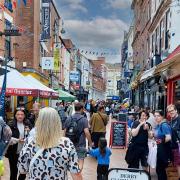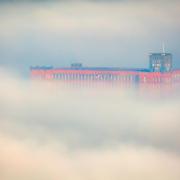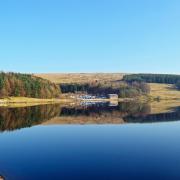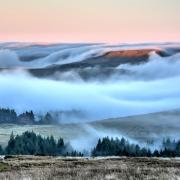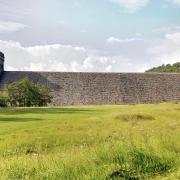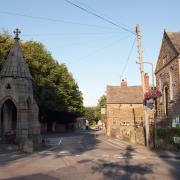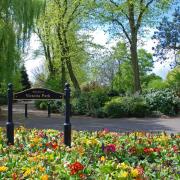Derbyshire has its fair share of notable sons and daughters. We go on a blue plaques tour of the county and finds some of our best.
There is nothing quite like walking around Derbyshire and taking in the amazing countryside, the wildlife and the sheer delight of being far from the madding crowd.
There is another great joy to be had from walking though – the blue plaques dotted around the county, each one a key to unlock the gateway to a stroll through history.
The original idea of blue plaques and celebrating people, monuments, historical events and buildings came about in 1866.
The first blue plaque ever to be unveiled was in 1867 and was awarded to Lord Byron's birthplace. Disappointingly, however, the house was demolished 20 years later!
This means that the earliest blue plaque to survive commemorates Napoleon III who once lived in King Street off St James Square in London.
Derbyshire boasts a rich collection of blue plaques, most of them actually blue.
That might seem a strange thing to read but it is quite deliberate, since ‘blue plaques’ come in browns, greens, greys and even black and are not always circular, some are rectangular or even squared.
In fact, it was only after the Second World War that the most common blue plaque design came into being.
Sir Barnes Wallis
Perhaps we should start our tour in Chapel Street, Ripley, where we find a plaque that is actually red but is still on the blue plaque list.
Here we find the birthplace of science hero Sir Barnes Neville Wallis, who grew up to be described as a scientist, engineer and inventor.
His catalogue of inventions and innovations is nothing short of phenomenal and of course he is part of British legend as the inventor of the famous ‘bouncing bomb’. Blue plaques do not say much but they are a window on so much.

Sir Henry Royce
Derbyshire was the birthplace of Rolls-Royce, probably the most famous and most coveted car the world has ever known.
It is no real surprise then to find that on a pillar outside Quarndon House there is a blue plaque dedicated to Sir Henry Royce, who lived there for a number of years.
A little bit of one-up-manship for Sir Henry is that there is also a statue of him outside the famous Rolls Royce HQ at Moor Lane, Derby.
George Stephenson
As we move on to another legend we find ourselves already caught up in the magic of blue plaques which tell us just enough to make us want to find out more. The black plaque is the enticing window which compels us to go inside.
Any railway enthusiast will mention the name of George Stephenson in hushed tones as he is also an iconic figure and a British hero of the rail system.
George moved to Derbyshire in the 1830s and lived at Tapton House, Chesterfield.
George could not read or write until he was in his late teens when he paid for an education to better himself. It was that kind of determination which led to him being a prolific creator of railways, rail bridges and trains.
He is entitled ‘The Father of Railways’ and there is both a plaque and a statue in his honour at Chesterfield railway station as well as numerous other plaques and statues in other parts of the country. He is entombed in the Holy Trinity Church.

Frances Bush
Frances Bush may not have become an internationally-acclaimed lady but she was heralded enough in Long Eaton to be worthy of a blue plaque in her honour at 99, Nottingham Road.
Frances was born in Ashby-de-la-Zouch in 1845. Her name was not Bush then; it became Bush when she married Alfred, son of William, who was a local dignitary providing employment as well as such innovations as gas lighting and steam engine power in the workplace.
When William died his four sons were due to take over but one by one they all died young and it was left to Frances to either walk away, likely with a financial comfort zone or to take over. She chose the latter.
The chief business was lace manufacturing and, at the age of 44, Frances launched herself into it while making sure that she was still very hands-on with her family.
She did not sit in an office making boardroom decisions, she was out there on the factory floor making lace along with her work staff. She attended markets to help sell the lace and at the same time instigated and funded improvements for the local community.
Frances was loved by her family and the local community and she is still held in great esteem, hence the blue plaque.

William Barron
William Barron was born in Scotland with green fingers at the start of the 19th century. His family were all gardeners so young William took to it like ivy to a trellis.
Have trowel, will travel was William’s ethos and after a successful spell at Syon House in Middlesex he was engaged by the fourth Earl of Harington to renovate part of the gardens of Elvaston Castle.
It was a big job but William was up to the challenge and was so successful that the next Earl not only kept him on but asked him to renovate the rest of the gardens and make them fit for the public to enjoy.
William was thrilled, of course, combining both his natural skills and love of his work with his flair for creative garden design.
It was a huge success and so popular with the local population, visitors from outside the area and, of course, his employers that there is a plaque at Nottingham Road, Borrowash, to pay tribute to the man with the golden trowel.
Herbert Nigel Gresley
Mention Herbert Nigel Gresley to any railway enthusiast and you will get the same response as for George Stephenson.
Herbert Gresley is another of the icons of rail history who is celebrated in Derbyshire. Although he was born in Scotland by chance (his mother didn’t expect to give birth while there on a visit), his passion for railways was matched by his love of this county and in particular, of Netherseal.
Herbert was an engineer at heart and was a very talented designer of all things mechanical. He was also a lover of the great outdoors and wildlife and it was no accident that one of his most famous creations was the celebrated railway engine, Mallard.
You might have heard of another of his railway engines – The Flying Scotsman!
Little wonder then that there is a plaque honouring him outside his childhood home, The Old Rectory, which is now a care home called Newlands House and can be found on Main Street, Netherseal.
A great mathematician
There are so many plaques honouring great Derbyshire people like brilliant mathematician Jedediah Buxton whose blue plaque at Elmington is a port-hole into his remarkable life.
A brilliant engineer
If you are near Amber Mill in Oakerthorpe, Alfreton, you will find another plaque remembering a pioneering engineer by the name of Joseph Whitworth, who was innovative in many areas of industry both in Britain and in America.

A rather famous nurse
We cannot ignore the plaque in Lea Hurst near Matlock, which is one of numerous tributes to one of the most famous women in history – Florence Nightingale.
She was brought up at the family home in the county and went on to becoming an icon of nursing and humanity. No wonder Derbyshire is so proud of her.
The Cromford writer
Another great lady, Alison Uttley, is honoured by a plaque on a dry stone wall near Castle Top Farm in Cromford, Derbyshire.
It was once her family home and a place that inspired her to write the stories that brought her international acclaim.
Arthur Lowe
We are proud too of another big name. He was one of our best-loved comedy actors and was born in Hayfield, where there is a plaque to honour him.
His career spanned decades and countless successes on both stage and screen. Who was he? I’d like to volunteer to tell you that he was Captain Mainwaring, yes Arthur Lowe.
There are, of course, many more plaques of varied hues and colours in the county, all worth exploring.
How many times do we walk past plaques, blue or otherwise and not really give them a second glance and yet, they really do provide us with such windows into the past into a world of the rich and famous, the poor but defiant, the creators, the inventors, the military and civilian heroes and even some of the entertainers and a few of the villains.
Next time you see one, stop a moment and take a look...




